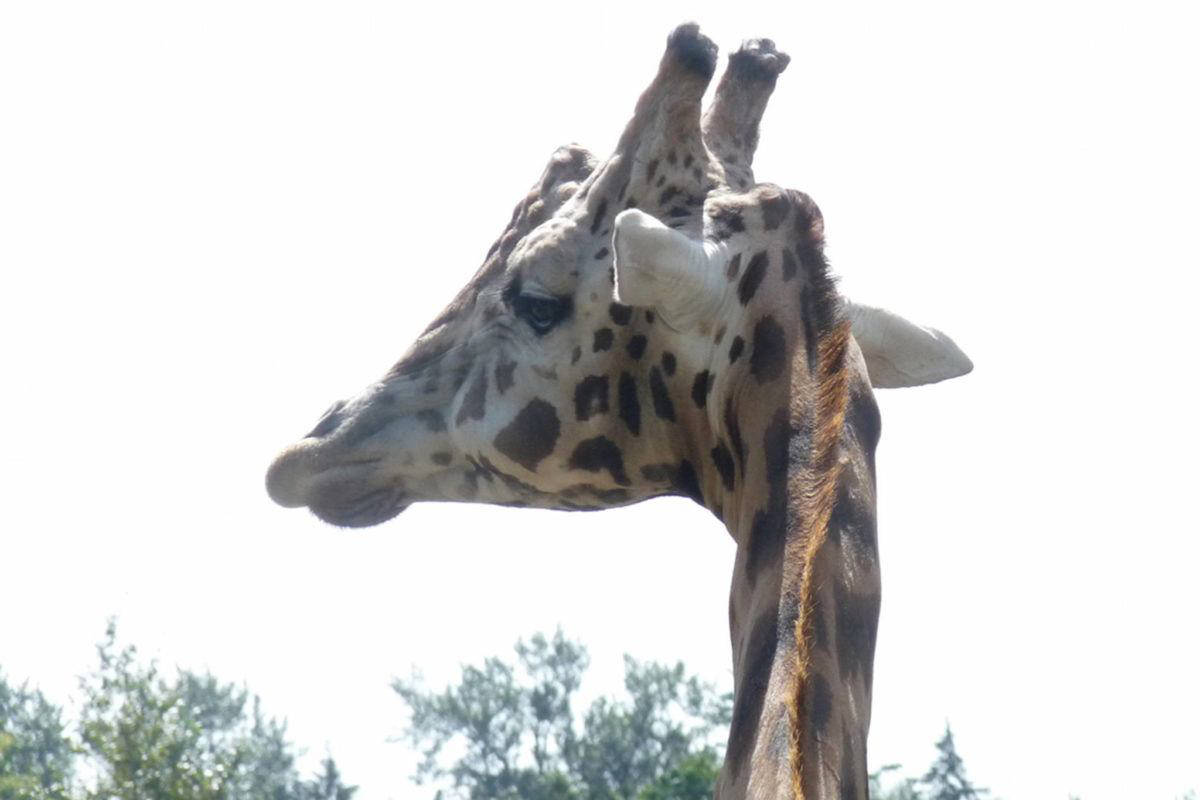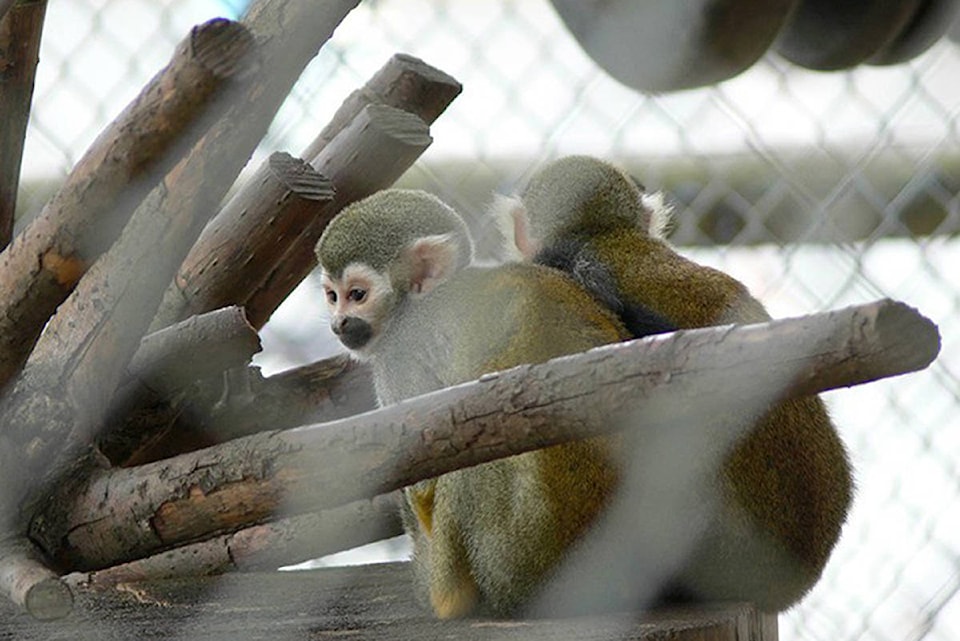Many animals at the in Greater Vancouver are living in 91¬„¡ƒ ”∆µúbarren, under-sized cages and enclosures that restrict them from engaging in natural behaviours,91¬„¡ƒ ”∆µù according to a report released Monday (Dec. 30) by the .
It calls on the Aldergrove zoo to improve conditions for its animals and to move away from 91¬„¡ƒ ”∆µúkeeping animals unsuited to B.C.91¬„¡ƒ ”∆µôs climate.91¬„¡ƒ ”∆µù
It was prepared for the society by , a Canadian-based international wildlife protection charity, based on 91¬„¡ƒ ”∆µúissues identified during three separate visits.91¬„¡ƒ ”∆µù
In the report, Zoocheck noted there have been improvements since the charity began issuing reports on the Greater Vancouver Zoo beginning in 1997, stating the zoo seems to have made a number of 91¬„¡ƒ ”∆µúsignificant, very positive, changes91¬„¡ƒ ”∆µù but adding 91¬„¡ƒ ”∆µúsome longstanding issues remain problematic and should be addressed.91¬„¡ƒ ”∆µù
91¬„¡ƒ ”∆µúThey include, but are not limited to, lack of space for certain species, lack of appropriate environmental conditions, lack of environmental and behavioural enrichment, lack of shelter and privacy areas, lack of proper social contexts, excess ground water and water logging of enclosure substrates.91¬„¡ƒ ”∆µù
Vancouver Humane Society spokesperson Peter Fricker said the zoo doesn91¬„¡ƒ ”∆µôt provide animals with a stimulating environment that allows natural activities such as climbing, foraging or digging.
91¬„¡ƒ ”∆µúThe main issue is a lack of enrichment,91¬„¡ƒ ”∆µù Fricker told Black Press.
Given the amount of space available on the 120-acre site, Fricker said the zoo should build larger enclosures with more for animals to do, 91¬„¡ƒ ”∆µúto alleviate boredom and frustration.91¬„¡ƒ ”∆µù
In the longer term, he said, the zoo needs to stop keeping captive animals for entertainment and move toward being a sanctuary for native wildlife.
Fricker said the the zoo91¬„¡ƒ ”∆µôs giraffe enclosure hasn91¬„¡ƒ ”∆µôt been changed since a 2003 Zoocheck report described it as 91¬„¡ƒ ”∆µúbarren and lacking in any stimulation for the animals to engage in natural behaviours.91¬„¡ƒ ”∆µù
In the new report, Zoocheck said that giraffes are not suited to B.C.s climate and suggested the zoo consider constructing a new, larger and climate-controlled enclosure or relocating the giraffes to a 91¬„¡ƒ ”∆µúmore species-appropriate facility elsewhere.91¬„¡ƒ ”∆µù
The report cites the zoo91¬„¡ƒ ”∆µôs raptor exhibit as an example of an undersized enclosure that denies natural behaviours, because it provides 91¬„¡ƒ ”∆µúlittle or no ability for the birds to engage in flight.91¬„¡ƒ ”∆µù
READ ALSO:
The Zoocheck report also found that reptiles were being kept in 91¬„¡ƒ ”∆µúvery restricted circumstances91¬„¡ƒ ”∆µù with 91¬„¡ƒ ”∆µúminimal91¬„¡ƒ ”∆µù space.
The hippopotamus enclosure was criticized for 91¬„¡ƒ ”∆µúlacking any vegetation and or enrichment elements91¬„¡ƒ ”∆µù and the indoor holding facility was described as 91¬„¡ƒ ”∆µúsmall and not suitable for the permanent keeping of these animals.91¬„¡ƒ ”∆µù
The zoo91¬„¡ƒ ”∆µôs lone red fox should be found a companion or be sent to a facility that can meet its social requirements, the report said.
Squirrel monkeys and coatimundi, it said, were in small enclosures and should be moved to more appropriate accommodation.
Fricker said the report was sent to the zoo, which did not respond.
91¬„¡ƒ ”∆µúWe would hope the zoo would pay attention,91¬„¡ƒ ”∆µù Fricker commented.
Black Press has reached out to the Greater Vancouver Zoo for a response.
The zoo was called the Vancouver Game Farm when it first opened on Aug. 20, 1970, and operated as a family business by Pat Hines and his wife Ann, then their daughter Eleanor and husband Hugh Oakes until it was sold to new owners in 1991.
The Game Farm then became known as the Greater Vancouver Zoological Centre, adding new animal enclosures, the miniature train, picnic park and other features.
In 1999, the name changed again to the Greater Vancouver Zoo.
It is the largest facility of its kind in B.C. and houses more than 140 wild and exotic animals including lions, a tiger, cheetah, giraffe and hippos.
It also contributes to conservation efforts on various fronts including work to build back the population of the spotted frog and the Western painted turtle.
READ ALSO:
Over the years, the zoo has faced controversy over the untimely death of some giraffes and the treatment of one of its hippos.
An outdoor enclosure was built for the hippo, including a large pond, after the criticism.
There have been protests by animal rights activists at the zoo from time to time.
dan.ferguson@langleyadvancetimes.com
Like us on Facebook and follow us on Twitter




